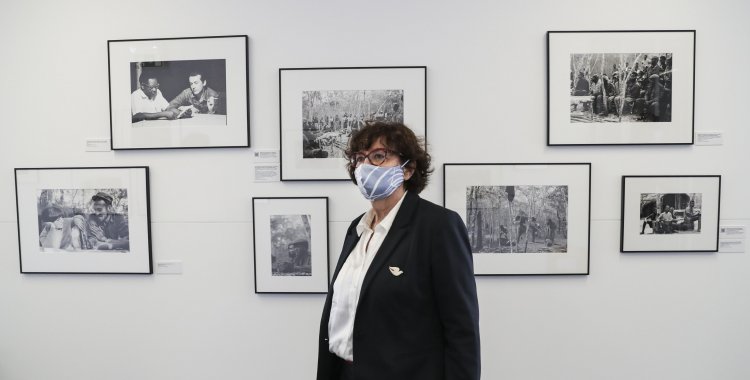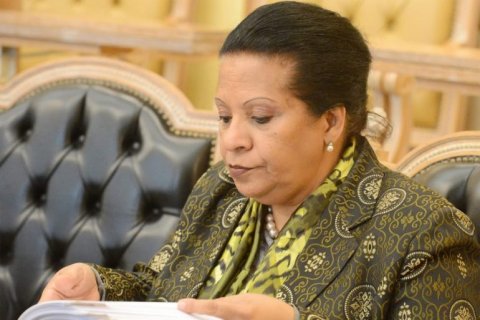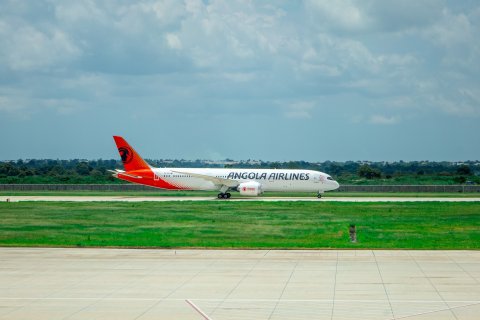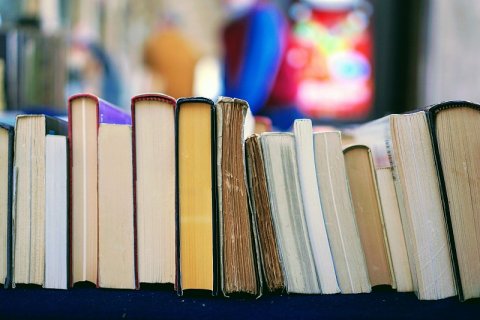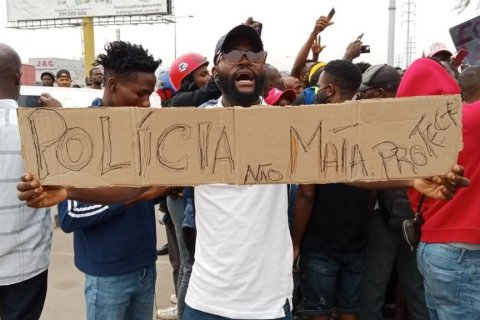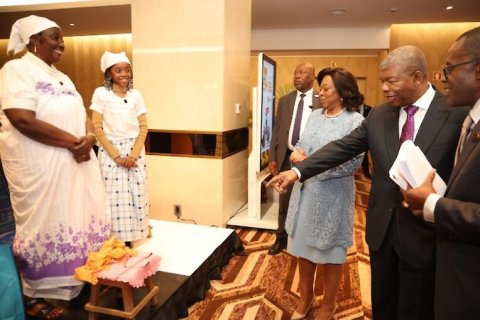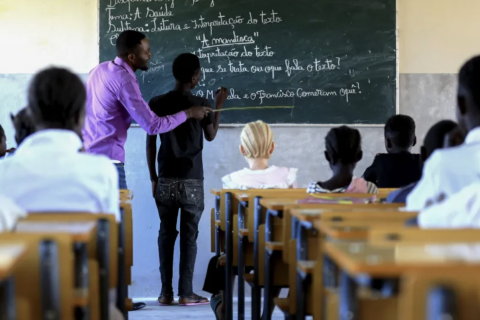Augusta Conchiglia entered Angola clandestinely in April 1968 to report on the struggle of the Popular Movement for the Liberation of Angola (MPLA). Together with Italian director Stefano de Stefani, her companion at the time, she was guided by the guerrillas for months and over hundreds of kilometers in the liberated zones of Moxico and Cuando-Cubango.
Of the thousands of photographs taken, a small part was published in "Guerra di Popolo in Angola / Guerre du Peuple en Angola" (1969), a small format album with Italian and Swiss-French editions.
Another sample of images is now on display at the Aljube Museum in Lisbon, where the photographer, who lives in Paris, gave a guided tour on Tuesday.
Augusta Conchiglia was 20 years old when she arrived in Angola for "the first big reportage" and her first trip to Africa. "It was a learning experience of all kinds", she summarized, in an interview to Lusa, after having seen for the first time the exhibition, curated by Maria do Carmo Piçarra and José da Costa Ramos.
Since then, 53 years later, the Italian photographer has continued "frequenting Angola", as she says, in good Portuguese.
Angola lives with the "awareness of the enormous mistakes" made in the past and "a will to correct them," she believes.
"We felt there was something, but we weren't up to speed on it," she reflects, referring to corruption and the emptying of Angola's state coffers, which no other African country has faced "on this scale."
In Augusta's opinion, it is the posture of the current government that distinguishes Angola from other African countries, such as Nigeria and Mozambique. "The current position is comforting, in that there is a strong reaction from the Government," she welcomes.
Despite the "ten, fifteen years that are a bit dark", Angola can serve as an example, "once again", which "does not mean that there are no problems and economic difficulties", which are "shared with most African countries". But "the issue of corruption, which paralyzed the country for a number of years, is faced with a certain courage," he highlights.
The photographer does not hide her political commitment, although she does not call it "militancy. The initial destination in 1968 was North Vietnam, but the present time has diverted her to Angola, fueled by the "casual sympathy" that resulted from a meeting with the then leader of the MPLA, when he was in Rome. The year was 1967, and Agostinho Neto warned them that they would have to accept "the conditions" of the land and that "it would be tiring, difficult, dangerous".
Integrated in the progressive movement of left, Italian, "very mobilized against the war in Vietnam and the fascism in Spain and Portugal," Augusta did not hesitate to move forward and explains that what can be seen today as "militancy," at the time, was a reality that should be denounced.
"We should make it known, at least. That was the spirit," she recalls, recognizing that this denunciation ended up becoming, "effectively, a form of support" for the anti-colonial liberation cause, because it mobilized international opinion.
Angola - the photographer stresses - "reached independence in incredible conditions," under "hostility" and "permanent international pressure, namely from the United States.
From the Italian capital, Augusta and Stefano then went on to Egypt and Zambia, before arriving in Tanzania, where part of the MPLA leadership was, and from which they received the framework of the situation and the indications to follow the guerrilla movement.
It was from Lusaka, Zambia, that they left for the Angolan border in a van. They entered "on foot, naturally".
More than half a century later, the memories of that year of 1968 are still "very vivid", despite Augusta having kept many of the photographs "in a drawer for many years". For this reason, she didn't hide "her surprise" with "some" of the curators' choices.
The young photographer of the time memorized those "months in the bush", the "very hard physical conditions", the lack of food ("there was only manioc, and once in a while beans arrived"), and the kilometers on foot. But also the richness "in human terms" and the MPLA's openness and support.
Maria do Carmo Piçarra highlights exactly this "humanistic dimension" of the guerrilla movement, which she sought to highlight from Augusta Conchiglia's "extraordinary" archive, to which she had access.
"They are images full of humanism, very complementary, that show not only the images of the guerrillas, the political training and military training, but all the dimensions of life in the liberated zones, the literacy, the hard work in the fields," she describes.
For this reason, the curators chose photos of "women, children and old people," some never before seen.
"The war was not only waged from a military point of view," but also extended, for example, to food, points out Maria do Carmo Piçarra, who also wanted to "restore the authorship" of the images, repeatedly used over the years without identifying their author: Augusta Conchiglia.
In the guided tour of the exhibition at the Aljube Museum, Augusta was accompanied by two dozen people, many Angolans, including Maria Eugenia Neto, widow of Agostinho Neto, and former guerrilla Julio de Almeida (known as commander Juju), accompanied by his son, the writer Ondjaki.
Augusta continues to photograph, but "little" - is now more dedicated to writing. Africa continues to be the focus.
"I am a journalist, I try to tell what is happening as objectively as possible, but the political commitment remains. I don't know if this is called militancy...", she says.
The exhibition "Augusta Conchiglia on the trails of the Eastern Front, images (and sounds) of the Liberation Struggle in Angola" will be on show at the Aljube Museum until December 31.
The photographs are accompanied by sounds (which can be heard using a 'qr code') recorded by the reporters on magnetic tape and edited later on the LP "Angola Chiama", with an image by Augusta Conchiglia.

